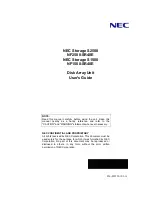
random, and transactional, among others), with different I/O packet sizes on a single HP 3PAR
storage system. The use of QoS rules stabilizes performance in a multi-tenant environment.
Mode of Operation
HP 3PAR Priority Optimization operates by applying upper-limit control on I/O traffic to and from
hosts connected to an HP 3PAR StoreServ Storage system. These limits, or QoS rules, are defined
for front-end input/output operations per second (IOPS) and for bandwidth.
NOTE:
IOPS is a common performance measurement used to benchmark computer storage. It is
indicative of how many host I/O requests the array is receiving per second. It is typically stated
as a whole number, such as 50,000 IOPS.
QoS rules are applied using autonomic groups. Every QoS rule is associated with one (and only
one) target object. The smallest target object to which a QoS rule can be applied is a virtual volume
set (VVset). Because a VVset can consist of a single VV, a QoS rule can target a single VV.
Every QoS rule has four attributes:
Name
The name of the QoS rule is the same as the name of the VVset.
State
The QoS rule can be active or disabled.
I/O Limit
The limit on IOPS for the target object.
Bandwidth Limit
The limit in bytes-per-second transfer rate for the target object.
When an I/O packet reaches the HP 3PAR StoreServ controllers, HP 3PAR Priority Optimization
takes one of the following actions:
•
Pass the I/O packet to the VV.
•
Delay the I/O by stalling it in a private QoS queue that gets processed periodically.
•
Return a SCSI queue-full (QFULL) message to the host.
If the upper limit for IOPS or bandwidth for a particular VVset has been reached, HP 3PAR Priority
Optimization delays SCSI I/O request responses for the volumes contained in that VVset. These
delayed I/O requests are pushed onto an outstanding I/O queue for the VV(s) in the VVset
experiencing the limit breach.
Every QoS rule maintains its own queue for delayed I/Os. These queues are constructed inside
the each HP 3PAR StoreServ controller node that receives an I/O request that needs to be delayed.
Only the I/O request descriptions are queued, not the actual data. A controller node’s cache is
not impacted, because the QoS rules are applied before write I/O data reaches the cache.
The size of a request queue varies by maximum delay time and QoS limits. When I/O requests
reside longer than 200ms in a QoS queue, any more incoming I/Os to the volumes in the VVset
are rejected, and a QFULL response is returned to the server using the volumes. QFULL prevents
delayed I/O from holding all system resources, such as host, HBA, and VV layer buffers and
queues. Hosts should respond to the QFULL message appropriately and throttle I/O. The I/O delay
and the eventual QFULL response applies to all members of the VVset, even if only one of the VVs
causes the QoS threshold breach.
HP 3PAR Priority Optimization features a system-wide, built-in QoS rule called
all_others
that
is inactive by default. This rule limits the IOPS and/or bandwidth to all volumes and VVsets that
are not subject to a named rule. Enabling the
all_others
rule obviates the need to define a
specific, named rule for all workloads on the storage system.
QoS Rule Minimum and Maximum
HP 3PAR Priority Optimization sets the values for IOPS and bandwidth in QoS rules in absolute
numbers, not in percentages. The IOPS number is stated as an integer between 0 and 2
31
-1,
although a more realistic upper limit is the number of IOPS that the particular array in question is
capable of providing, given its configuration. The value for bandwidth is stated as an integer
152
HP Priority Optimization
















































